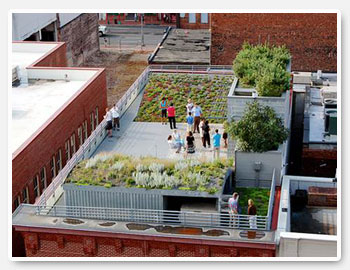This section contains all relevant documents and deliverables associated with the Consolidated TMDL Implementation Plan and Revised Monitoring Framework
Consolidated TMDL Implementation Plan (2022 IP)
The District’s MS4 permit requires an update to the Consolidated Total Maximum Daily Load (TMDL) Implementation Plan (IP), which was developed in 2016. This update (2022 IP) focuses on incorporating new information into the IP and updating all required elements, including the MS4 wasteload allocation (WLA) inventory, WLA attainment dates, and the achievement of existing programmatic milestones. The 2022 IP summarizes progress to date in implementing best management practices (BMPs) to reduce loads, and provides projections and attainment strategies to guide future implementation
Consolidated TMDL Implementation Plan (2016 IP)
In August of 2016, DOEE updated the draft Consolidated TMDL Implementation Plan in response to comments from stakeholders and EPA.
- Updated Consolidated TMDL Implementation Plan
- Appendices: Consolidated TMDL Implementation Plan
- Comment Response Summary
Draft Consolidated TMDL Implementation Plan
This document was made available for a 90-day public comment period on May 15, 2015. Comments to DDOE should be clearly marked “Consolidated TMDL Implementation Plan” and either (1) mailed or hand-delivered to DDOE, Stormwater Management Division, 1200 First Street, NE, 5thFloor, Washington, DC 20002, Attention: TMDL Implementation Plan, or (2) emailed to jonathan.champion@dc.gov.”
Revised Monitoring Framework
This document was made available for a 90-day public comment period on May 8, 2015. Comments to DDOE should be clearly marked “Draft Revised Monitoring Plan” and either (1) mailed or hand-delivered to DDOE, Stormwater Management Division, 1200 First Street, NE, 5th Floor, Washington, DC 20002, Attention: Revised Monitoring Plan, or (2) emailed to jonathan.champion@dc.gov.”
Comprehensive Baseline Analysis
The Comprehensive Baseline Analysis establishes the remaining MS4 pollutant loads to be reduced for each of the TMDLs. Referred to as “The Gap”, this evaluation of the amount of remaining pollutant load reduction that needs to be accomplished is based on a comparison of current loads and individual MS4 waste load allocations.
Scenario Analysis
This Scenario Analysis Report describes a series of stormwater management scenarios that were modeled using the IP Modeling Tool. Results of these scenarios are used to develop the IP. The analysis described in this report provides the District with a framework and tools needed to develop the IP in a comprehensive and coordinated manner, with specific targets and timelines for achieving MS4 WLAs
Additional Project Documents
Request for Proposal
The request for proposal contains the complete project scope and deliverables for the project. A thorough review of the RFP details the goals the District desires to accomplish with this plan.
Quality Assurance Project Plan (QAPP)
The Project Team (the Team) has developed this Quality Assurance Project Plan (QAPP) to guide all of the technical activities of team members engaged on the project. The purpose of the QAPP is to document the necessary procedures required to assure that the project is executed in a manner consistent with applicable guidance documents and with generally accepted and approved quality assurance objectives. As such, the QAPP integrates quality control policies and procedures with project-specific work tasks.
Methodology
The Methodology document i describes the processes and methods to develop the Implementation Plan. Some sections also describe data gathering, interpretation of regulations, and research already conducted or underway.
Crosswalk Comparison
The Crosswalk Comparison of Monitoring Needs and Existing Monitoring Components identifies the gaps that exist between the monitoring needs and requirements outlined in the MS4 permit and monitoring efforts currently being implemented through various monitoring programs at DDOE. It also includes recommendations for how DDOE can best meet the permit requirements moving forward and integrate across existing monitoring programs to create efficiencies.
Memo – Update – Development of Bacteria Translators
In 2011, LimnoTech developed a translator equation to assist the District Department of the Environment (DDOE) with the translation of ambient receiving water bacteria measurements and TMDLs from fecal coliform to E. coli. Subsequent to development of this original DC translator, DDOE and DC Water decided to reassess the translator and extend it to include wet weather sources of bacteria. End-of pipe paired samples from CSO and storm water sources in DC were provided by DC Water. This memorandum summarizes the methods used to develop the translators and presents the results from this analysis.
Memo -Development of Bacteria Translators
The District of Columbia (DC) Department of the Environment (DDOE) approved fecal coliform bacteria total maximum daily loads (TMDLs) for a total of 24 impaired segments in 2003 and 2004. These TMDLs require translation from fecal coliform to E. coli bacteria expressed as a daily load because of a change in the water quality criteria and a court ruling on the daily expression of TMDLs, both of which occurred after 2004. LimnoTech and Battelle conducted the first phase of this work to evaluate the existing receiving water bacteria monitoring data to determine if a sufficient amount of fecal coliform and E. coli data are available to develop a scientifically defensible “translator” from fecal coliform to E. coli bacteria.
